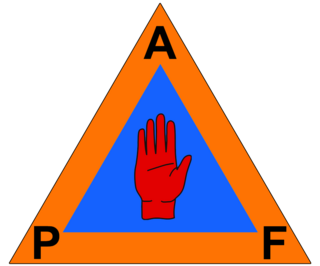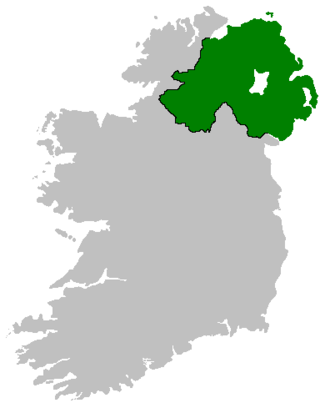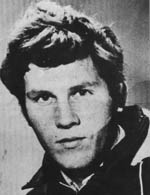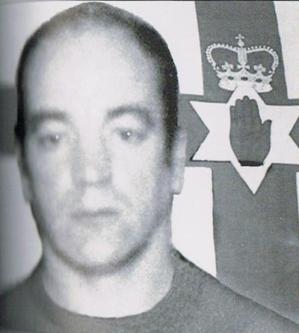Stalker/Sampson Inquiry
This section contains too many or overly lengthy quotations for an encyclopedic entry.(March 2008) |
On 24 May 1984 an inquiry under Deputy Chief Constable John Stalker of the Greater Manchester Police was opened into three specific cases where it was alleged that a specially trained undercover RUC team known as the "Headquarters Mobile Support Unit" had carried out a "shoot-to-kill" policy:
- 11 November 1982: The killing of three unarmed IRA members at an RUC checkpoint in east Lurgan, County Armagh. [4] [5] Three officers were acquitted of their murder in June 1984, the presiding judge, Lord Justice Maurice Gibson, commending them for their "courage and determination in bringing the three deceased men to justice – in this case, to the final court of justice." [6]
- 24 November 1982: The killing, by an RUC undercover unit, of Michael Tighe and the wounding of his friend Martin McCauley at an IRA arms cache on a farm near Lurgan, County Armagh. (19 years later, McCauley was arrested in Colombia, accused by the Colombian authorities of teaching FARC guerillas in the use of explosives, in particular the "barrack buster"). [7] [8]
- 12 December 1982: The killing at an RUC checkpoint in Mullacreavie, County Armagh, of two INLA members, Seamus Grew and Roddy Carroll. (The intended main target, Dominic McGlinchey, was not in their car as expected.) [9]
The shootings were initially investigated by other members of the RUC, and the Director of Public Prosecutions for Northern Ireland decided to bring prosecutions. At the first trial, relating to the shootings of the two INLA men, Constable John Robinson admitted to having been instructed to lie in his statements, and that other witnesses had similarly altered their stories to provide justification for opening fire on Grew and Carroll. When Robinson was found not guilty, the resulting public outcry caused RUC Chief Constable John Hermon to ask John Stalker to investigate the killings.
On 5 June 1986, just before Stalker was to make his final report, he was removed from his position in charge of the inquiry. On 30 June, he was suspended from duty over allegations of association with criminals. On 22 August, he was cleared of the allegations and returned to duty, although he was not reinstated as head of the inquiry. The inquiry was taken over by Colin Sampson of the West Yorkshire Police. Its findings were never made public.
In the book Stalker, published by Stalker in 1988, the following descriptions of his investigation into the three shooting incidents appeared, concerning the McKerr, Toman and Burns shooting:
The Stalker inquiry discovered that the three victims of the shooting had been under surveillance for many hours by the police who planned to intercept them at a place different from where the killings occurred. No serious attempt to attract the attention of the driver was made, and no policeman was struck by the car. Immediately after the incident the police officers drove from the scene with their weapons and returned to their base for a debriefing by senior Special Branch Officers. Officers from the Criminal Investigation Department (CID) were denied access for many days to the police officers involved and to their car, clothes and weapons for forensic examination. On the night of the killings, CID officers were given incorrect information about where the shootings began and part of the forensic examination was conducted in the wrong place. Many cartridge cases of rounds fired were never found.
We believed... that at least one officer had been in an entirely different position from that which he had claimed to be in when some fatal shots were fired. I also established that the police pursuit took place in a different manner from that described. But most damning of all, almost 21 months after the shooting we found fragments of the bullet that undoubtedly killed the driver still embedded in the car. That crucial evidence had lain undiscovered by the RUC and Forensic Science service... My conclusion in relation to the missing cartridge cases was that as many as twenty were deliberately removed from the scene. I could only presume that this was in order to mislead the forensic scientists and to hide the true nature and extent of the shooting.
I had to regard the investigation of the matter as slipshod and in some aspects woefully inadequate. I was left with two alternative conclusions, either that some RUC detectives were amateur and inefficient at even the most basic of murder investigation routines; or that they had been deliberately inept.
Concerning the three incidents as a whole, Stalker wrote:
Even though six deaths had occurred over a five-week period... and involved in each case officers from the same specialist squad, no co-ordinated investigation had ever been attempted. It seemed that the investigating officers had never spoken to each other. Worse still, despite the obvious political and public implications, no senior officer had seen fit to draw the reports together. We had expected a particularly high level of enquiry in view of the nature of the deaths, but this was shamefully absent. The files were little more than a collection of statements, apparently prepared for a coroner's enquiry. They bore no resemblance to my idea of a murder prosecution file. Even on the most cursory of readings I could see clearly why the prosecutions had failed.
According to The Times of 9 February 1988, Stalker stated that although he never found written evidence of a shoot-to-kill policy, there was a "clear understanding" that officers were expected to enforce it.
In 1990 the RUC issued a response to Stalker's book, saying that the book contained many inaccuracies and distortions and gave a misleading impression. In particular it stated, in contradiction to Stalker's assertions, that:
- it was wrong to allege that the three investigations were carried out under different detectives as the same detective superintendent was in charge of two of the investigations
- the investigation files were presented to the Director of Public Prosecutions in the format approved by him
- it was already established in a police statement of 13 November 1982 that no police officer had been struck by the car driven by Gervaise McKerr
- it had been advisable, for the safety of the three officers, that they leave the scene immediately
- their weapons had been seized without delay by the scene of crimes officers
- no incorrect information was given to the investigating officers concerning where the shooting occurred, although uniformed officers had mistakenly positioned the tape on the junction and it was repositioned accurately shortly afterwards
- although it was accepted that all the cartridges were not recovered, due to the torrential rain at the time some could have been washed down the drains; the area had nonetheless been swept over for two days with metal detectors.
Criticisms were also made that Stalker had gone outside his remit to reinvestigate the shooting incidents as well as a terrorist incident on 27 October 1982 in which three police officers had been killed and that his report, when submitted, lacked the clarity and precision normally associated with criminal investigations.
The government also submitted that, on 23 June 1992, Thorburn[ who? ], when he withdrew a libel action against the RUC Chief Constable, made a statement in which he took the opportunity to submit publicly that he was satisfied that the RUC had not pursued a shoot-to-kill policy in 1982 and that the RUC Chief Constable had not condoned or authorised any deliberate or reckless killings by his officers. Other members of the Stalker/Sampson inquiry team also stated in June 1990 that "the Greater Manchester officers wish to stress that the Stalker/Sampson Enquiry found no evidence of a 'Shoot to Kill policy'". [10] [11]











